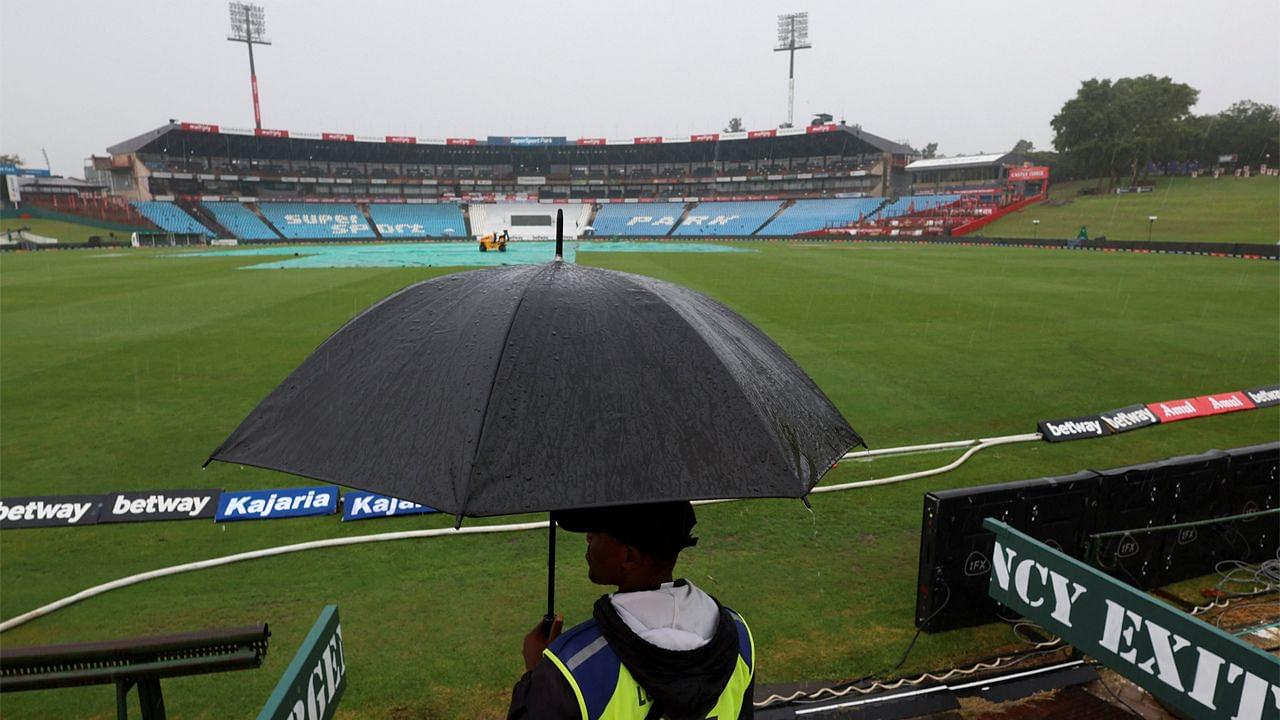The first Test of the ongoing India’s tour of South Africa is being played on a damp pitch at the SuperSport Park. Caused by persistent rain in the absence of sunshine in Centurion, dampness was observed on the surface after the start of play was delayed by 30 minutes. Although hair dryers were used to dry the pitch, overcast conditions ensured that the bowlers were in for a treat.
Advertisement
“As the Test progresses, there might be a bit of up and down movement which could be tricky to handle. Batting will get difficult as the Test progresses,” SuperSport broadcasters Shaun Pollock and Ravi Shastri said at the toss.
For those who don’t know, a damp pitch is nothing but a “wet pitch” which generally happens due to an extra bit of moisture present majorly due to rain. Hence, whenever a ball pitches on a damp spot, there is variable bounce which makes batting difficult.
As for Day 1, India batter Shreyas Iyer‘s dismissal against South Africa pacer Kagiso Rabada was a perfect example of how one can’t trust the bounce on a damp surface. Iyer, who would’ve expected the ball to bounced normally, was deceived by the slight lack of it. On most other occasions, the ball taking a steep bounce off the wicket.
In the general run of things, captains tend to bat first on a damp pitch as batting in the fourth innings can be a daunting affair. However, overcast conditions convinced South Africa captain Temba Bavuma to bowl first.
The best way to save a pitch from dampness is by reducing the amount of water on the back of covering it properly during rains. Assuming sun makes its presence felt on the last three days of the match, this pitch can certainly get better for batters.
Does A Damp Pitch Aid Bowlers?
Yes, a damp pitch aids bowlers without having anything in it for the batters. A high amount of moisture makes a pitch cohesive and even if a batter judges the bounce well, he/she will find it tough to find perfect timing because of the slowness.
As a result, adding confusion in a batter’s mind with regard to the pace at which the ball will come onto the bat. A spinner, on the other hand, can take advantage of the same by deliberately pitching the ball on damp patches. Therefore, making the lives of batters difficult on the back of the ball turning with a reduction in pace.
The presence of damp patches on a green wicket is even more difficult for batters as the ball gets a lot of bounce in some areas and negligible on the others. The same is evident in the ongoing Test as well.
For a batter, there is no particular advantage on such wickets primarily due to the unpredictable nature of the pitch.






![Cricketers Who Played First Test Match As Captain [FULL LIST]](https://cdn-wp.thesportsrush.com/2024/01/201ef095-first-test-match-as-captain.jpg?format=auto&w=384&q=75)
